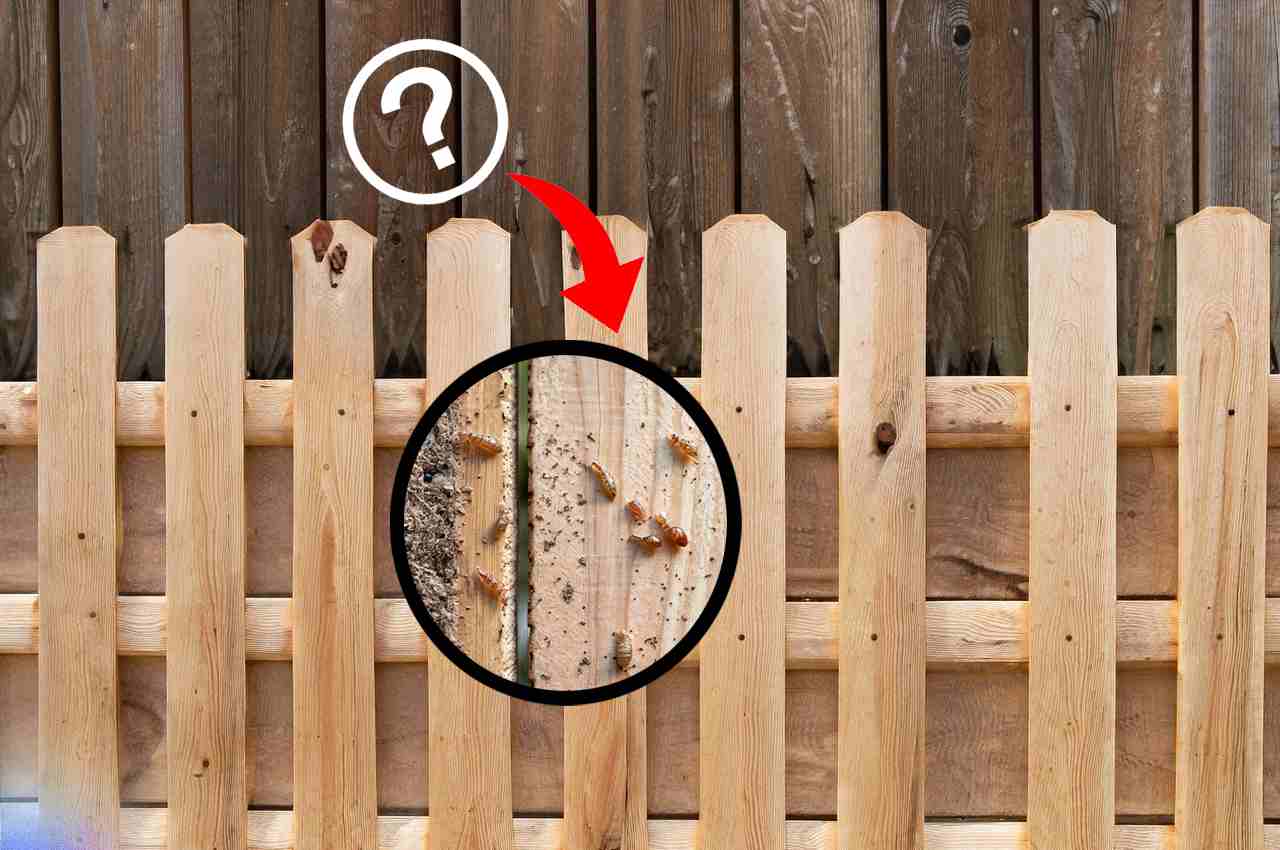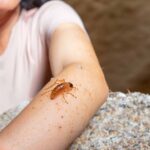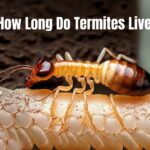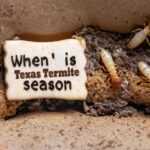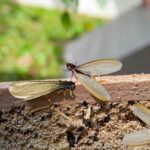Outdoor furniture, decking, fence, and siding are often made from cedar wood. It is resistant to rust, decomposition, and insects because of its natural oils. However, do termites consume cedar wood? We’ll examine why cedar wood is an effective repellent against termite damage and how you may efficiently protect your wooden assets, from the repelling properties of cedar oil to the fascinating exceptions. Now, let’s get into the specifics.
Will termites eat cedar wood?
Cedar oil naturally repels termites, so they avoid cedar wood. Although cedar wood possesses inherent termite-repelling chemicals, termite damage is still a possibility. Cedar wood is ideal for outdoor furniture and building because it resists termites. However, the western subterranean termite has developed a tolerance for cedar oil and may damage cedar wood. Over time, maintenance and preventative treatment can protect cedar furniture, shingles, timber, and more from termite hazards.
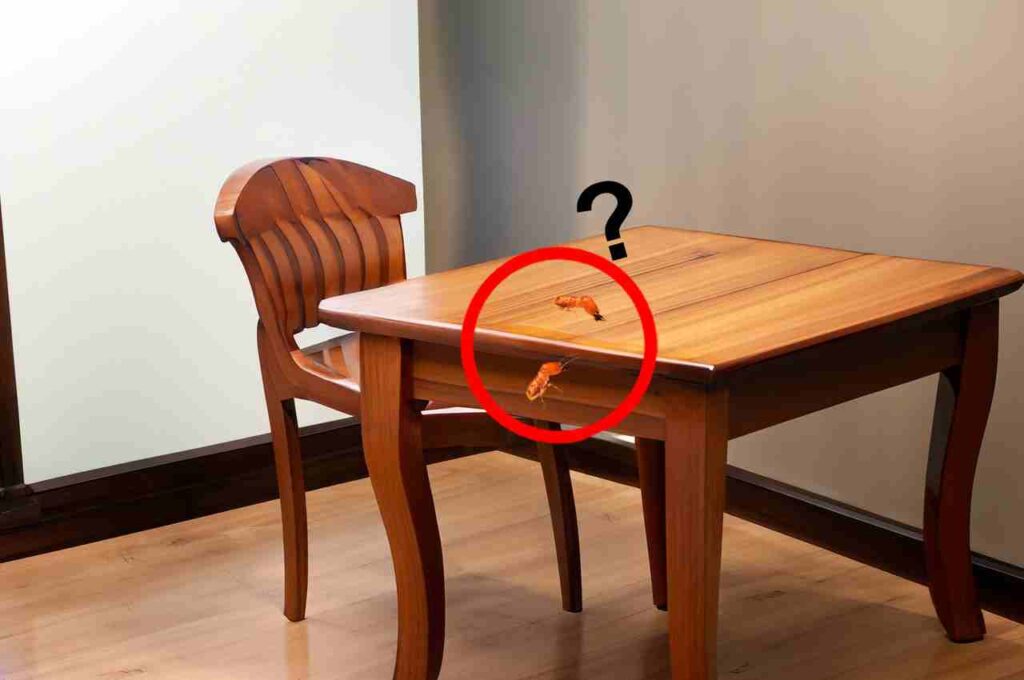
Different Cedar Varieties and Termite Resistance
| Cedar Type | Termite Resistance |
|---|---|
| Eastern Red Cedar | High |
| Western Red Cedar | Moderate |
| Aromatic Cedar | High |
| Spanish Cedar | Moderate |
Factors Affecting Termite Resistance in Cedar Wood
| Factor | Impact on Termite Resistance |
|---|---|
| Age of the wood | Older wood is more resistant |
| Moisture content | Dry wood is more resistant |
| Type of cedar used | Varies by cedar species |
| Presence of termites | Can increase susceptibility |
Comparison of Cedar Oil Content in Different Cedar Types
| Cedar Type | Cedar Oil Content |
|---|---|
| Eastern Red Cedar | High |
| Western Red Cedar | Moderate |
| Aromatic Cedar | High |
| Spanish Cedar | Low |
An Overview of Termites on Cedar Wood
Termites are tiny, colonial insects that eat the cellulose in wood and wood products. The preferred foods of the various kinds of termites vary. Underground termites dig tunnels to get to supplies of wood and reside there. Drywood termites do not need ground contact to infest seasoned timber. Live trees and untreated timber are vigorously attacked by Formosan termites.
All termites need cellulose, although certain species choose particular types of wood over others. Which woods are resistant to infestation may be determined by understanding termite behavior.
The Natural Durability of Cedar
The cypress family of conifer plants includes a variety of cedar trees. Oils, resins, and organic substances in its heartwood serve as natural insect deterrents and preservatives. Cedar is resistant to fungus, mold, mildew, and wood decay because of the compounds in it.
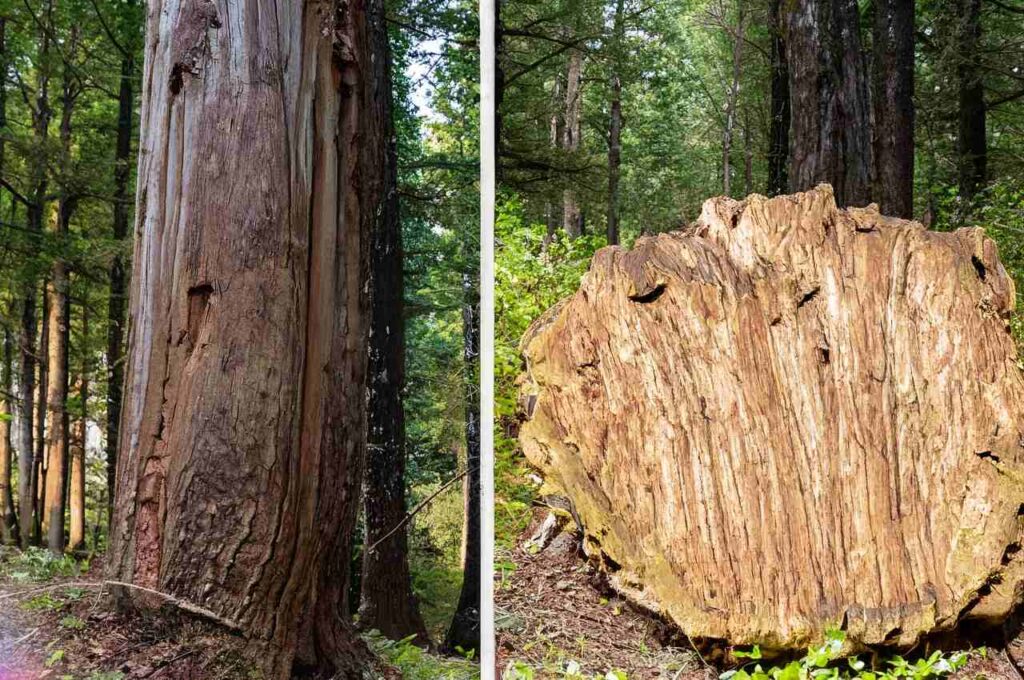
When exposed to outside weather, several varieties of cedar have a lifespan of more than 20 years. Termite infestation is less likely due to cedar’s ability to resist deterioration. However, untreated sapwood and weak spots in cedar may still harbor termites.
Do Termites Eat Red Cedar?
One of the cedar species that resists rot the best is red cedar. It is often crimson in hue and smells strongly of spices. Red cedar contains the organic compounds thujone and cedrol, which may keep termites away.
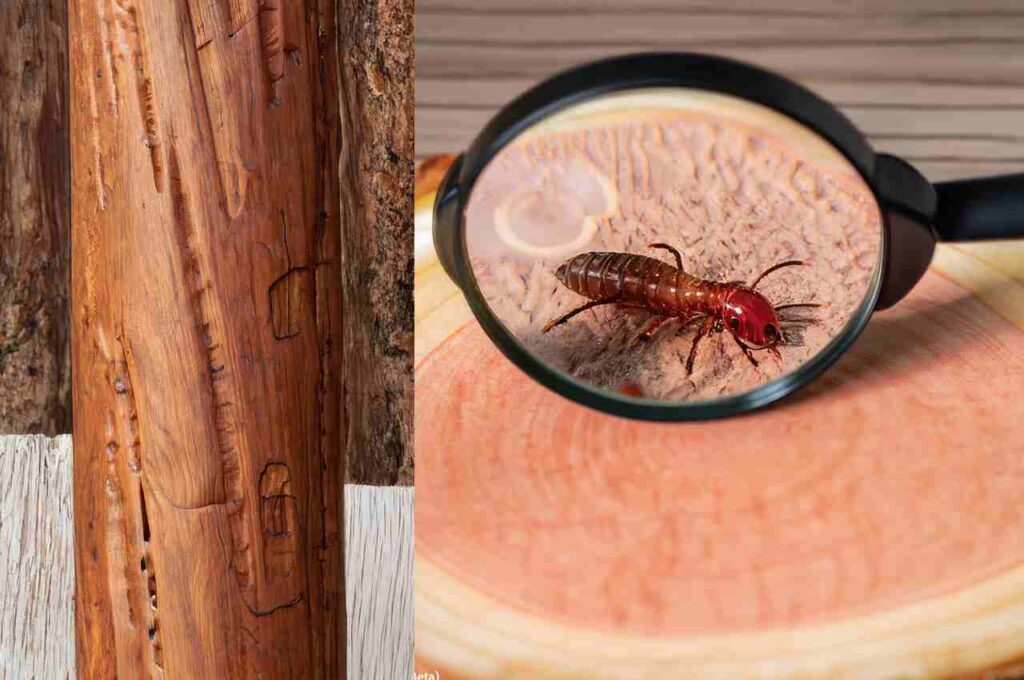
Red cedar is less susceptible to termites than typical timbers for outdoor furniture or gardening. It is not entirely resistant to termite harm, however. Long-term ground contact or dampness might gradually reduce its resistance. Red cedar may be protected against termites with regular examination and treatment.
The Exposure of Cedar Mulch
Cedar chip or shred mulch aids in weed control and soil moisture retention. Cedar mulch is inherently insect-resistant because of the oils it contains. However, it loses chemical power as it breaks down. Subterranean termites may be attracted by damp cedar mulch placed directly on the ground.
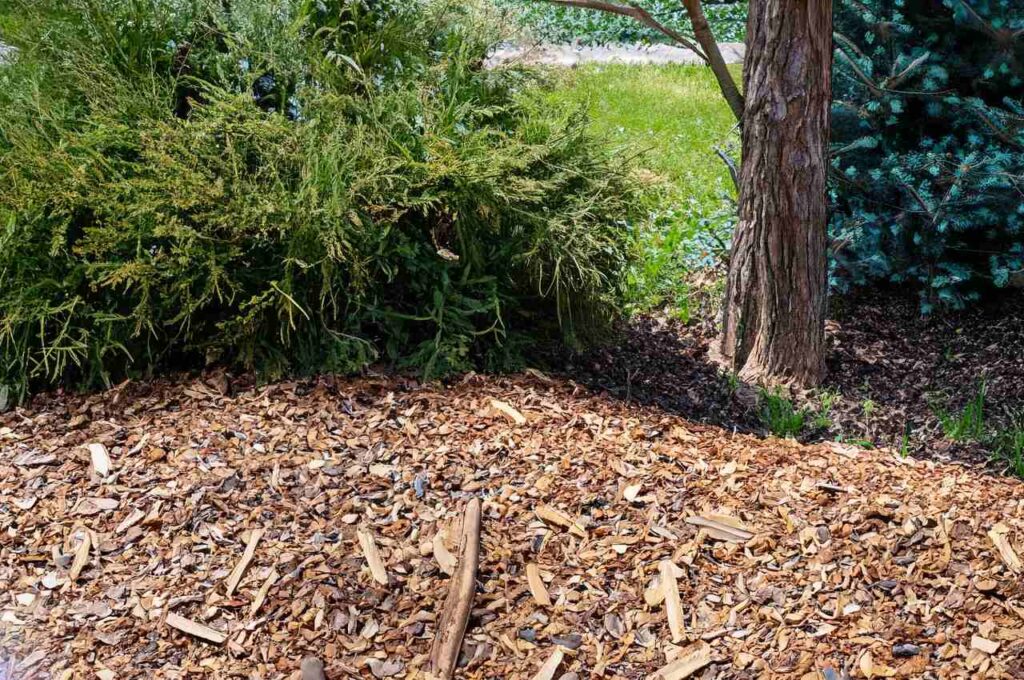
Replacement of worn-out mulch layers decreases termite attraction. Avoid putting mulch up against the house’s foundation. Maintain a few-inch separation between mulch beds and wood siding. Mulch beds should be kept away from water sources like downspouts.
Types of Cedar Mulch and Features
| Cedar Mulch Type | Source | Aroma | Termite Repellent | Decomposition Rate | Use Cases |
|---|---|---|---|---|---|
| Eastern Red Cedar | Eastern Red Cedar trees | Strong, Distinct | High | Slow | Landscaping, Garden Beds, Pathways |
| Western Red Cedar | Western Red Cedar trees | Mild, Pleasant | Moderate | Moderate | Landscaping, Mulching, Aesthetic |
| Aromatic Cedar | Aromatic Cedar trees | Strong, Invigorating | High | Slow | Mulching, Pest Repellent, Fragrance |
| Spanish Cedar | Spanish Cedar trees | Mild, Sweet | Moderate | Moderate | Decorative, Fragrant Mulching |
Can Termites Eat Through Cedar Lumber?
Cedar timber is prized for its ability to withstand the elements and repel insects. Its inherent toughness may aid in preventing termite infestation. However, untreated sapwood found in cedar timber may still support termites. Once inside, they can jeopardize the building’s integrity.
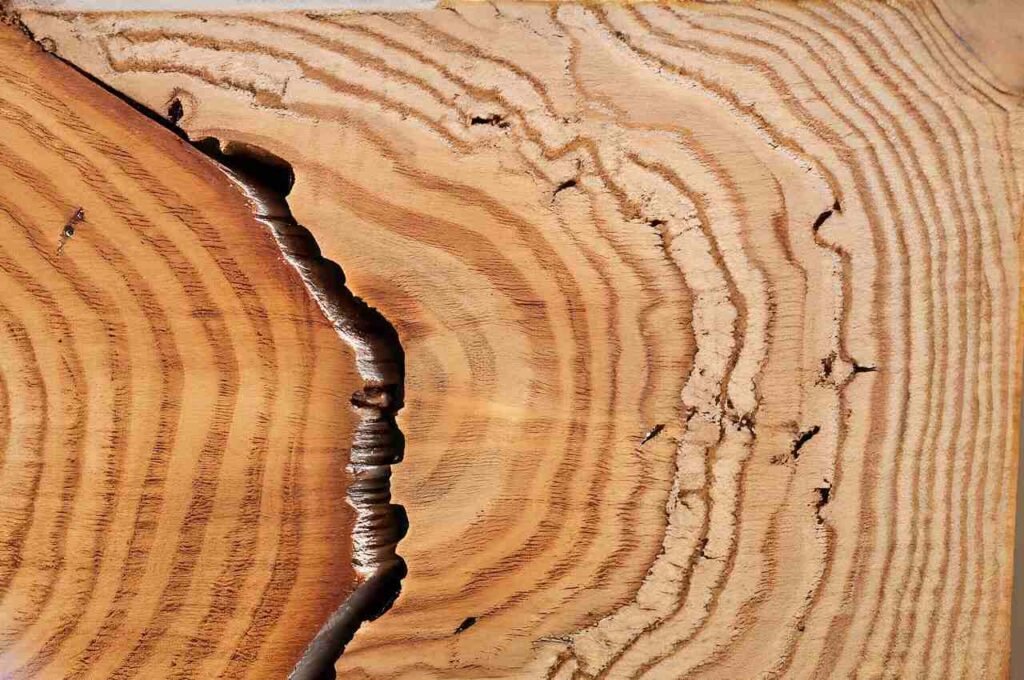
While cedar timber reduces certain termite threats, complete protection cannot be guaranteed. Cedar’s resistance to termites is increased by preservation treatment. Combine termite-resistant elements like concrete, steel, or masonry with cedar timber. Regularly check for early indications of infestation.
Do Termites Infest Living Cedar Trees?
Termites are repelled by the oils found in living cedar trees. However, there are circumstances in which termites may attack live cedars. Formosan termites, for instance, may infiltrate living trees and feed vigorously on cellulose. The natural defenses of a tree are also weakened by drought stress.
There are still some repulsive properties in cedar tree mulch or wood chips. Mulch is resistant to termites, but with time, it degrades. Mulch beds should be kept away from cedar tree trunks. Inspect items made of dead wood and live trees for termites.
Can Termites Get Through Cedar Wood Siding?
Cedar wood siding adds aesthetic appeal to houses due to its inherent durability and texture. Additionally, rot, warping, and vermin cannot harm cedar siding. However, untreated cedar siding might be penetrated by termites under the correct circumstances. Vulnerability is impacted by elements such as moisture, soil contact, and wood type.
Keeping cedar siding up keeps termites at bay. Maintain siding 4 inches from roof lines and at least 6 inches above soil level. Give siding and other materials some room. Regularly check for termites, particularly close to the ground. Treatments with preservatives also increase cedar’s termite resistance.
Do Termites Eat Through Cedar Shingles?
As roofing and siding materials, cedar shingles provide a rustic appeal. The organic oils assist in warding off water and wood-boring insects. However, with time, exposure to moisture and light depletes protecting substances. Termites may enter via worn or damaged cedar shingles.
The key to avoiding termite problems is to maintain cedar shingles. Restore insect and water resistance by applying coatings. Any missing or broken shingles must be replaced immediately. To prevent moisture accumulation, increase ventilation. Check the shingles often for termites, particularly close to the eaves and roof edges.
How to Keep Termites Out of Cedar Decks?
Cedar decks in the backyard offer a beautiful outdoor living area. Cedar decking is attractive, long-lasting, and has some built-in insect protection. Decks are susceptible to termites due to ground contact, dampness, and garbage. Preventative maintenance protects cedar decking.
Avoid placing footings or posts directly in the ground. Use concrete piers or metal holders. Deck planks should be slanted and sealed. Fix any cracks that termites could use to enter. Look for tubes or swarms of shelter beneath the decks. For optimal protection, treat decking timber before installation.
Cedar Furniture and Termite Risks
Cedar patio furniture and outdoor accents are charming and weather-resistant. Cedar is resistant to rot and termites because of its natural chemicals. However, termites may still cause harm to furniture that is exposed to the soil or kept outside all year.
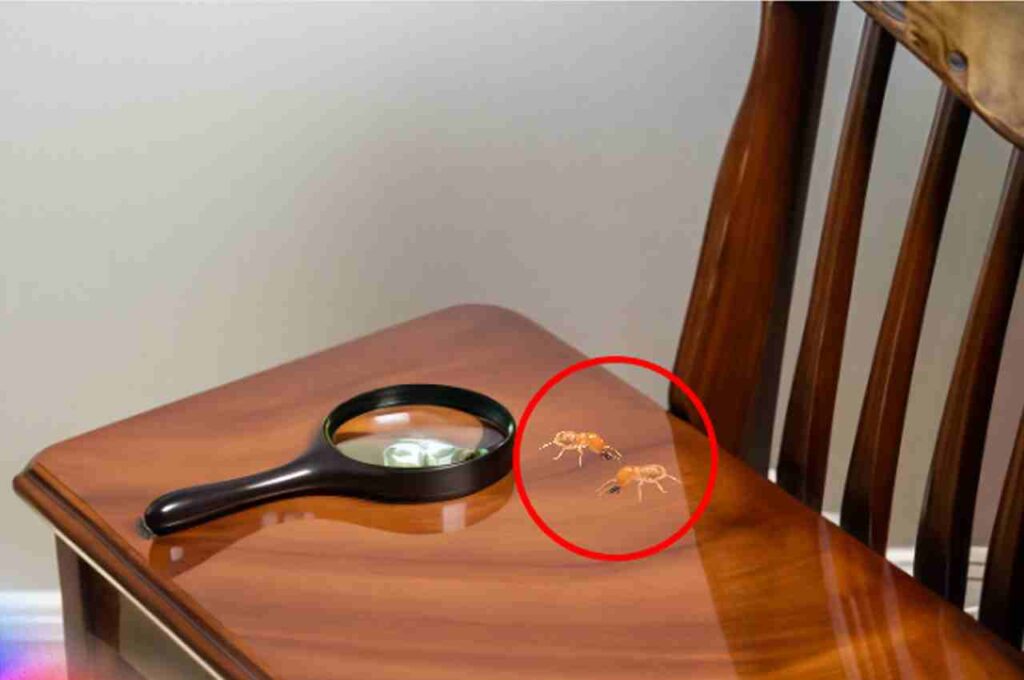
During the winter, keep cedar furniture inside a garage or shed. To prevent termites, submerge furniture legs in water cans or diatomaceous earth. Annually apply a protective sealant on cedar furniture. Regularly check for termites’ early warning signals, such as tiny holes or shelter tubes. Rapid infestation detection helps avoid extensive harm.
Conclusion
In domestic building and outdoor projects, cedar wood has several advantages. It offers protection against termites due to its inherent toughness and pest-resistance traits. Cedar, particularly over time, is not resistant to termite attack. The defenses of cedar against termites are strengthened by proper usage, maintenance, and preventative treatment. Keep an eye out for any prospective infestation’s first indications. Act quickly to reduce termite damage and maintain the beauty of cedar.
Frequently Asked Questions
Is cedar wood resistant to termite damage?

Cedar oil repels termites, making cedar wood termite-resistant. This makes cedar wood tougher to digest and less enticing to termites, protecting it. However, termites may eat cedar wood if they find it. The kind of cedar, wood age, moisture level, and proximity to termites all affect termite resistance in cedar wood.
Can termites infest and damage cedar structures?
Even though cedar wood is naturally termite-resistant due to its cedar oil concentration, termites may destroy it. Although cedar wood has a termite-repellent fragrance, no wood is immune to termites. Despite cedar’s repelling properties, determined termites may devour the wood. Cedar kind, wood age, moisture levels, termite presence, and structural integrity, especially holes or fissures that may let termites in, affect cedar constructions’ susceptibility.
Does cedar repel termites naturally?
Cedarwood repels termites due to cedar oil, a natural substance with a strong odor. Cedar oil deters and hinders termite digestion, making cedar wood unsuitable for these deadly insects. However, termites may attack any wood. If determined, termites can eat cedar wood despite its repelling characteristics. Cedar type (e.g., eastern red cedar), wood age, moisture content, and local termite population affect cedar wood termite resistance.
Do termites avoid feeding on cedar wood?
Because cedar oil smells bad to termites, they avoid eating cedar wood. The cedar oil makes termites’ digestion tough and repels them. However, the western and Formosan subterranean termites are less affected by cedar oil and may devour cedar wood.
Is aromatic cedar resistant to termite attacks?
Due to its cedar oil concentration and strong scent, fragrant cedar is termite-resistant. This cedar oil hinders termite digestion and deters them. Please note that termites may attack any wood. If motivated, termites may eat fragrant cedar wood. The termite resistance of aromatic cedar depends on its kind (like eastern red cedar), wood age, moisture levels, and termite infestation.
Can cedar closets prevent termite damage?
Cedar closets can avoid termite damage, but not always. Cedar wood’s natural cedar oil smells bad, making it hard for termites to digest and deterring them. Cedar closets may prevent termite damage. However, the kind of cedar, the wood’s age, moisture levels, and termites can affect its efficiency. Cedar closets provide some protection, but other termite control methods should be used with them.
Are termites likely to harm cedar siding?
Cedar siding is termite-resistant owing to its natural cedar oil. Cedar siding is less appealing to termites since this cedar oil has a strong aroma. No wood is immune to termite infestations. If determined, termites can eat cedar siding. Cedar siding’s termite resistance depends on its kind, wood age, moisture content, and termites.
Does cedar mulch attract or repel termites?
Cedar mulch’s impact on termites is debatable due to cedar oil’s termite-repellent aroma. Cedar mulch may repel termites, while other research indicates little effect. Cedar kind, wood age, moisture content, and termite presence may affect cedar mulch’s termite-repelling characteristics. If termites are a problem, avoid cedar mulch and gravel, rock, or decomposed granite instead.
Can termites damage cedar furniture?
Cedar oil makes cedar wood termite-resistant, yet cedar furniture may be damaged. Though cedar oil’s fragrance repels termites, cedar furniture is nonetheless vulnerable. If determined, termites can eat cedar furniture. The cedar kind, wood age, moisture levels, and termite presence affect the termite resistance of cedar furniture. Regular inspections and care are essential for cedar furniture to last and avoid termite damage.
Are cedar fences at risk of termite infestations?
Cedar fences are termite-resistant because the cedar oil smells bad to termites. Cedar fences are not completely resistant to termite infestations despite their natural defense. If determined, termites may eat fence cedar wood. The kind of cedar, wood age, moisture levels, and termites in the area affect cedar fence termite resistance. Regular inspections and maintenance are important to prevent termite infestations in cedar fences.
How can I protect cedar wood from termites?
Despite its termite-resistant characteristics owing to cedar oil, numerous methods may be used to safeguard cedar wood. Before or after installation, apply commercial termite-resistant preservatives to the wood. A concrete, metal, or plastic termite barrier may physically block termites from reaching wood. Termites thrive in damp environments; keeping the wood dry helps deter them. Regularly examining the wood for termite damage, such as holes or frass, and treating any damage immediately is crucial. Combining these methods may greatly reduce cedar wood termite damage.
What are the signs of termite damage to cedar wood?
Small holes near the base of the wood or in damp areas are signs of termite damage to cedar wood, as are frass (termite droppings) around holes or on the ground, winged termites swarming, moisture around the wood attracting termites, and a hollow sound when tapped. A professional pest control firm must be consulted to evaluate the damage and prescribe treatment if any of these indicators are found.
- How do termite mounds help regulate temperature? - 7 January 2024
- 10 Effective Termite Control Methods That Actually Work - 4 January 2024
- How Long Does It Take for a Termite Mound to Form? - 21 December 2023
